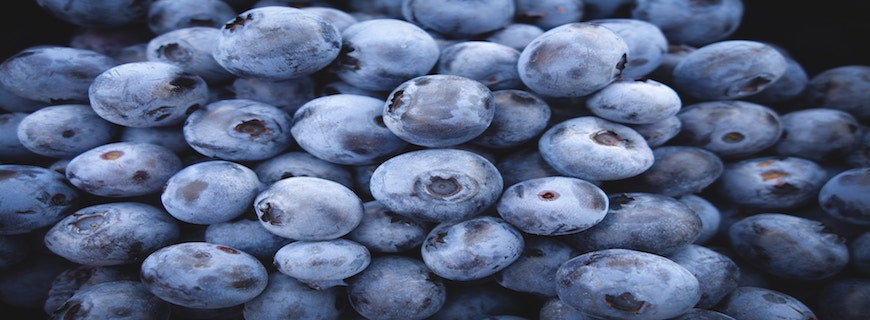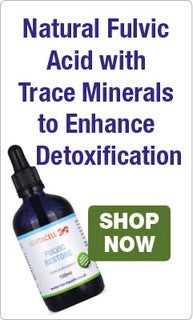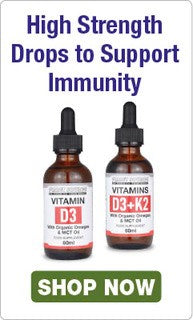For a compound possessed of such extraordinary power, polyphenols are still mostly waiting for their moment in the sun.
But that moment will assuredly come, for more and more of us are beginning to understand and appreciate just how important polyphenols are in maintaining good levels of health.
Indeed, they have been touted as nature’s best medicine for supporting the health of gut bacteria, among other things.
Read on to learn more about these wondrous phytochemicals.
Polyphenols: An Introduction
In a nutshell, polyphenols are antioxidant-rich chemical compounds found mostly in plants, although also in plant-derived beverages like red wine and tea, unsweetened baking chocolate, cereals and certain nuts and seeds.
Their name is derived from their composition of more than one phenol unit per molecule, and there are in excess of 8,000 polyphenol compounds currently known: several thousand more are under investigation.
In the plant world, polyphenols offer protection from ultraviolet radiation, difficult climatic conditions and harmful pathogens.
In this sense, it’s perhaps unsurprising that their protective effects extend to human disease.
Broadly speaking, polyphenols can be subdivided into four categories according to the quantity of phenol rings they contain. These include flavonoids (which perhaps receive more publicity than polyphenols as a whole), stilbenes (of which, resveratrol is the most famous), lignans and phenolic acids.
Among other functions, these polyphenols modulate the activity of a broad number of enzymes and cell receptors. Thanks to their antioxidant properties, they also safeguard cells from the assault of free radicals, which in itself can presage cell disfunction and a heightened risk of heart disease and Alzheimer’s.
It is for this reason that polyphenols are most often filed under the subheading Preventive Nutrition.
Although there are many reasons why vegetables are implicitly healthy – both from a calorific standpoint and also a structural one – a large part of the reason is that they are abundant sources of polyphenols.
Indeed, evidence for the role of polyphenols in the prevention of a brace of degenerative conditions, not least cancer and cardiovascular disease, continues to grow.
That said, research into polyphenols remains at an early stage: in the years ahead, the focus will be on understanding polyphenol bioavailability, including the kinetics of absorption.
For now, based on the fact that polyphenols are fat soluble, the advice is to eat polyphenol-rich foods alongside good healthy fats to increase nutrient absorption.
Polyphenols and Superfoods
When you look into superfoods, it’s clear that the vast majority are so-labelled owing to their inordinately high number of polyphenols.
As with any food though, other factors can influence a plant’s polyphenol content. These include ripeness, methods of processing and storage, and factors relating to the environment in which the plant is harvested (soil quality being perhaps the main one).
The polyphenol content of organic, sustainably-grown, non-GMO vegetables, therefore, is higher than those grown in hydroponic conditions.
Similarly, freeze-drying appears to preserve a greater overall phenol content.
Something else worth considering is food preparation: since a high number of polyphenols are present in greater concentrations in the outermost part of a fruit or vegetables, the very process of peeling can quite literally cut polyphenols out of the equation.
In repeated epidemiological studies, introducing greater numbers of polyphenols to the diet has dramatically reduced markers of oxidative stress, an imbalance known to lead to countless pathophysiological conditions.
In one comprehensive 2014 study of over 7,000 individuals, which was itself based on the wide-ranging PREDIMED study assessing the effects of a Mediterranean diet, the link between polyphenol consumption and cardiovascular disease risk was evaluated.
The scientists found that greater intake of polyphenols – particularly from flavanols, lignans and hydroxybenzoic acids – was associated with an overall decreased risk of CVD.
Separate studies have shown that consuming flavonoids helps to improve blood flow to the brain, as does resveratrol, the natural polyphenol commonly found in grapes.
Resveratrol also has a positive effect on gut bacteria. The assorted polyphenols in black tea, meanwhile, have been known to influence gut microbial diversity, both by increasing bifidobacteria and reducing C-reative protein, a known marker of inflammation.
“Polyphenols are the most abundant antioxidants in the human diet,” explains Dr David Perlmutter, MD, in his New York Times bestselling book Brain Maker.
“It has been estimated that we consume as much as 1 gram of polyphenols each day, which is about ten times higher than daily consumption of vitamin C and 100 times higher than our intake of vitamins E and A. Polyphenols…have become a major focus of research.”
Polyphenols for Diabetes
Only this month, we learned that uniquely-derived polyphenols in strawberries and cranberries improved insulin sensitivity for people with pre-diabetes.
Published in the British Journal of Nutrition, the study found that GlucoPhenol, a proprietary blend of cranberry and strawberry extracts, produced notable improvements in insulin sensitivity among non-diabetic insulin-resistant adults.
Specifically, it increased insulin signalling and the transportation of glucose into skeletal muscle.
“These results are particularly encouraging, as they indicate that polyphenols may delay or even halt the progression of type 2 diabetes,” concluded Hélène Jacques, PhD, who led the study.
Polyphenol Benefits are Largely Dependent on Gut Bacteria
The success of your dietary choices depends, to a large extent, on the dense consortium of microbes living in your gut.
Among their many responsibilities, these bacterial critters eat indigestible dietary fibre and convert it into compounds our colon absorbs.
According to Dr. David Perlmutter, MD, “the ability of your body to extract and use the polyphenols you consume is dictated largely by the gut bacteria.
“Those bugs once again take center stage in coordinating your biology for the benefit of your health. In order to fully gain the health benefits of polyphenols from the foods you eat, you need a healthy microbiome.”
If your microbiome has taken a hit due to stress, antibiotic protocols or diet, it is sensible to invest in a strong probiotic to build the colony of beneficial bacteria back up.
Not only will it positively affect your digestion and immune system, but it will potentiate the effectiveness of dietary polyphenols.
Polyphenols: Foods to Look Out For
It is worth investigating which foods offer the most benefit as far as polyphenols are concerned.
Coffee, for instance, contains twice the number of polyphenols in green tea.
Astonishingly, red onions are packed with 100 times as many polyphenols as white onions. And the polyphenol content of red wine is ten times higher than white wine.
Much of the benefit of red wine, which is a characteristic of the heart-healthy Mediterranean diet, stems from its generous polyphenol content.
On a per serving basis, the richest sources of polyphenols include black elderberry, blackcurrant, filtered coffee, sweet cherry, plum, blackberry.
A rundown of the 100 foods highest in polyphenols was published by the European Journal of Clinical Nutrition a few years ago.
One specially-formulated supplement especially high in polyphenols is Vibrant Health’s Spectrum Vibrance powder.
The superfood delivers natural trace nutrients and antioxidants from some of the most polyphenol-rich fruits and vegetables in existence, including elderberry extract, blackberry (freeze-dried), plum, red raspberry (freeze-dried), pomegranate seed and rind extract, and blueberry (freeze-dried).
Spectrum Vibrance is also loaded with 60 mg of phycocyanin, the blue pigment of spirulina which offers its own benefits to joint and heart health.
Such is the powder’s concentrated nutrition that it supplies an array of plant fibres, carotenoids, alkaloids, vitamins (A and C) and minerals.
In fact, a single scoop of Spectrum Vibrance is equivalent to 4.5 servings of fruit and vegetables and delivers 68% of your recommended daily vitamin C.
Conclusion
Ultimately, we should aim to consume a balanced mix of polyphenols from various food sources. But blending up a glass or two of Spectrum Vibrance each day, or adding a scoop to smoothies or protein shakes, is a great way of assuring a healthy intake of these valuable compounds.
Hopefully you are a little more aware of the important role played by polyphenols when it comes to maintaining health. But if you have any questions or comments, don’t hesitate to get in touch!
Water for Health Ltd began trading in 2007 with the goal of positively affecting the lives of many. We still retain that mission because we believe that proper hydration and nutrition can make a massive difference to people’s health and quality of life. Click here to find out more.




























Leave a comment